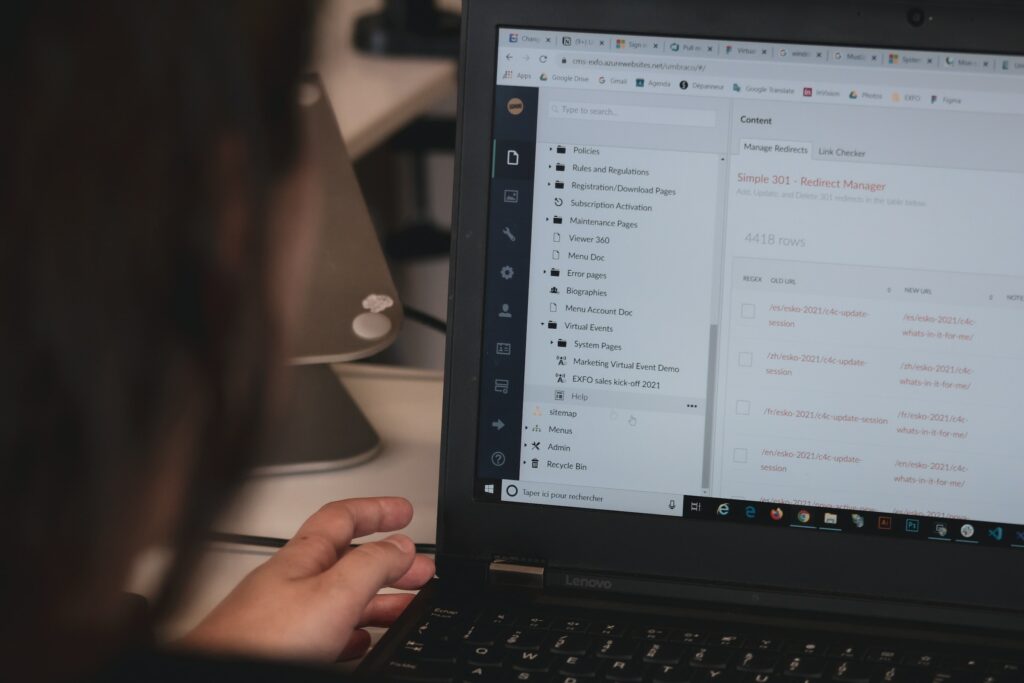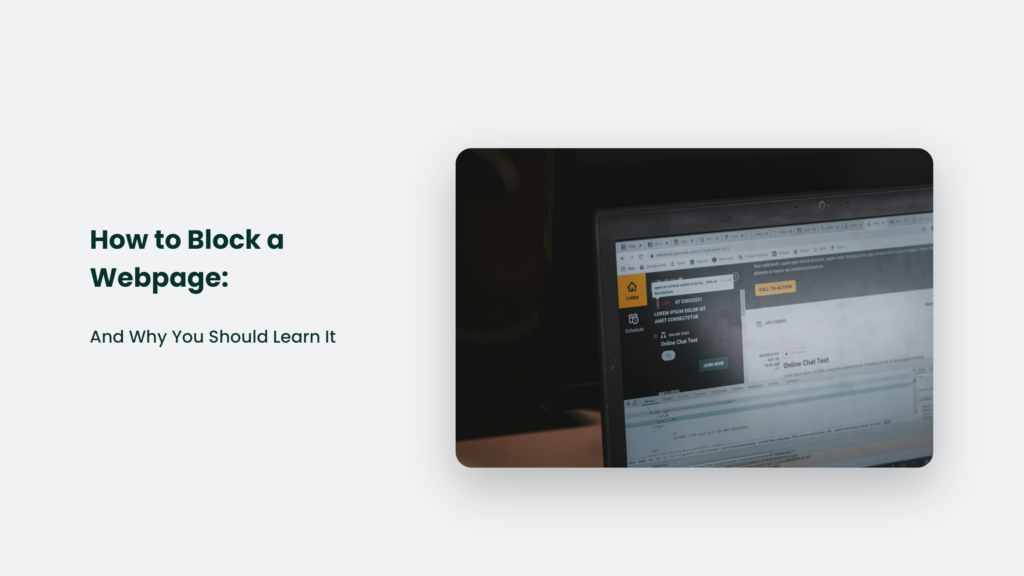

How to Block a Webpage: And Why You Should Learn It

As Seen On
We’ve all been there – you’re trying to get work done, but that one website keeps tempting you with distractions. Or there’s a page you find toxic or unhelpful that you’d rather avoid. Blocking webpages might seem simple, but doing it effectively requires some strategy.
In this post, we’ll explore the ins and outs of how to block a webpage, from simple browser tweaks to nuclear options like host file editing. I’ll share my tricks for avoiding procrastination sinks without going overboard. And we’ll ponder the deeper question: should we really be blocking anything at all?

Why Blocking Webpages Matters
- Stay focused. Close that Reddit tab and avoid falling down internet rabbit holes when you need to be productive.
- Improve your mental health. Block websites that make you anxious or angry. Create a more positive online space.
- Be intentional. Decide what sites align with your goals versus those that distract you. Blocking helps put you in control.
- Stop addictive behaviors. Block sites you compulsively visit despite negative consequences.
- Increase productivity. Reduce distractions and time-wasting. Blocking is like closing the door to an endless candy shop when you’re on a diet.
- Avoid things you dislike. Block clickbait sites, toxic forums, and old exes’ Instagram feed – remove what doesn’t spark joy!
But blocking webpages can also be a double-edged sword…
The Case Against Blocking
- Avoiding problems isn’t the same as solving them. If procrastination is an issue, it is better to address the root causes than slap on superficial blocks.
- Inflexible blocking can limit access to useful sites. Overblocking leads to frustration when you actually need something later.
- It’s a passive solution. Relying on blocks alone means failing to build your own self-control and discipline.
- You’ll find a workaround when desperate. Strict blocks just lead to digging up workaround after workaround.
- The internet will always distract you. Blocking a few sites barely scratches the surface of the distraction iceberg.
- Information wants to be free! Blocking access to sites seems somewhat authoritarian and against the spirit of the web.
So, blocking webpages isn’t a panacea. But when used judiciously, it can be a helpful tool in your productivity arsenal. Now, let’s explore some methods to block sites, from lightweight to nuclear.
How to Block a Webpage:
Level 1: Browser Extensions
Browser extensions like StayFocusd (Chrome) and LeechBlock (Firefox) allow you to block individual sites or entire categories on a schedule. Just want to avoid social media during work hours? Easy.
Pros: Simple, flexible, reversible.
Cons: Easy to uninstall or work around when your willpower fails.
Level 2: App Blockers
Dedicated apps like Freedom and Cold Turkey block sites across all browsers and devices. Some let you set timed sessions.
Pros: It is harder to bypass than single-browser extensions. Syncs across devices.
Cons: Usually paid subscriptions. It is still possible to uninstall if you really want to.
Level 3: Router Blocking
Block sites at the router level so the blocks apply to your whole network. Log in to your router’s admin console and look for keyword/domain-blocking features. Or use router firmware like DD-WRT with OpenDNS or pi-hole.
Pros: It is very difficult for most people to bypass. Total network block.
Cons: Requires router admin access and technical skills. Overblocking affects other users on your network.
Level 4: Hosts File Hack
Edit your host file (on Windows, Mac, or Linux) to redirect blocked domains to 127.0.0.1, aka nowhere. It is like rewriting your device’s internal DNS to block sites.
Pros: Nearly impossible to bypass without admin access. Works across all browsers and devices.
Cons: Requires manual editing of system files – advanced nerd skills needed. Maintenance can be complex.
Level 5: Nuclear Option – Internet Shutoff
Use apps like Freedom to disable your internet for blocks of time completely. The nuclear option for avoiding distractions!
Pros: 100% effective at blocking everything.
Cons: No internet means you can’t do remote work unless you plan. Overkill.
My Blocking Best Practices
I use a lightweight mix of browser extensions and router-based blocking:
- StayFocusd to block distracting sites during work hours.
- LeechBlock with a constantly updated blacklist for toxic sites.
- OpenDNS for blocking categories like gambling and porn network-wide.
It gives me the flexibility to tune blocks as needed without going overboard. I also try to cultivate self-awareness around procrastination and stay mindful of when blocking becomes a distraction.
Frequently Asked Questions:
Can I block just part of a webpage?
Yes, using a browser extension like uBlock Origin you can manually block page elements. Useful for removing distracting parts of pages you still want to visit.
I blocked a site but really need it now. Help?
Temporarily disable browser extensions, or access the site from a different browser or device not blocked. For router/DNS blocks, change settings or use a VPN.
Are there free blocking options?
Yes, browser extensions like StayFocusd are free. OpenDNS home filtering is free. Apps like Cold Turkey have free limited trials.
Parting Thoughts
- Use blocking tools judiciously rather than as a complete solution. Address root causes like procrastination and internet addiction directly.
- Carefully consider what and when you block. Don’t overdo it.
- Blocking webpages can help maintain a healthier, more intentional online life. But real discipline starts from within.
- Focus on adding value to your life, not just removing distractions.
Konger
Up until working with Casey, we had only had poor to mediocre experiences outsourcing work to agencies. Casey & the team at CJ&CO are the exception to the rule.
Communication was beyond great, his understanding of our vision was phenomenal, and instead of needing babysitting like the other agencies we worked with, he was not only completely dependable but also gave us sound suggestions on how to get better results, at the risk of us not needing him for the initial job we requested (absolute gem).
This has truly been the first time we worked with someone outside of our business that quickly grasped our vision, and that I could completely forget about and would still deliver above expectations.
I honestly can't wait to work in many more projects together!
Disclaimer
*The information this blog provides is for general informational purposes only and is not intended as financial or professional advice. The information may not reflect current developments and may be changed or updated without notice. Any opinions expressed on this blog are the author’s own and do not necessarily reflect the views of the author’s employer or any other organization. You should not act or rely on any information contained in this blog without first seeking the advice of a professional. No representation or warranty, express or implied, is made as to the accuracy or completeness of the information contained in this blog. The author and affiliated parties assume no liability for any errors or omissions.

